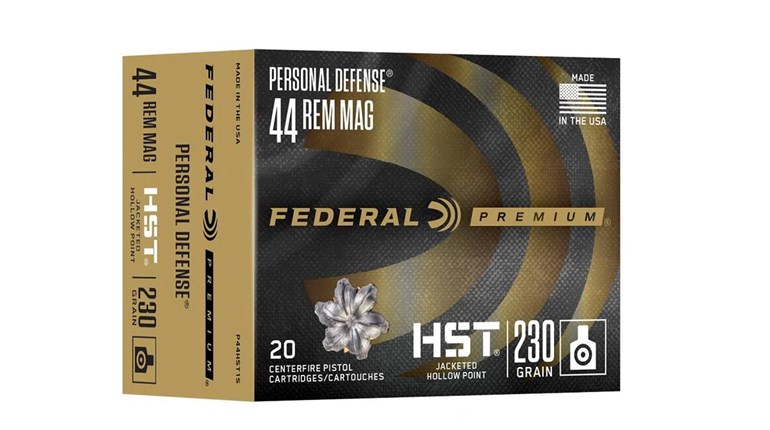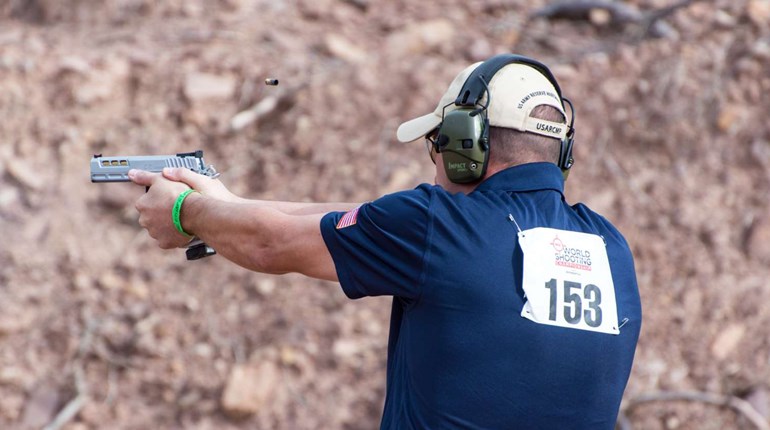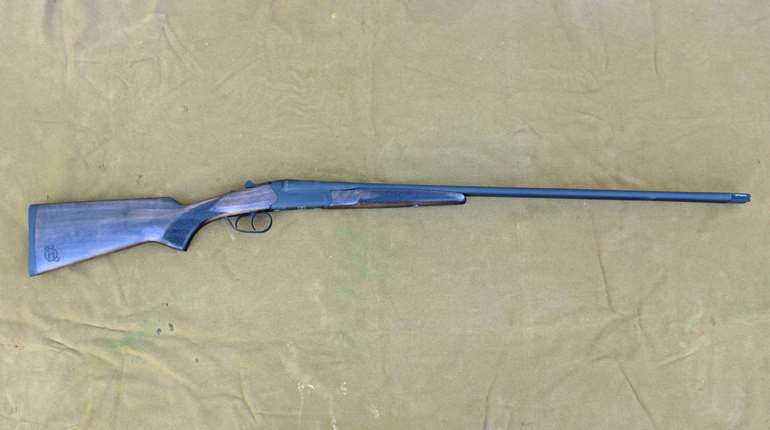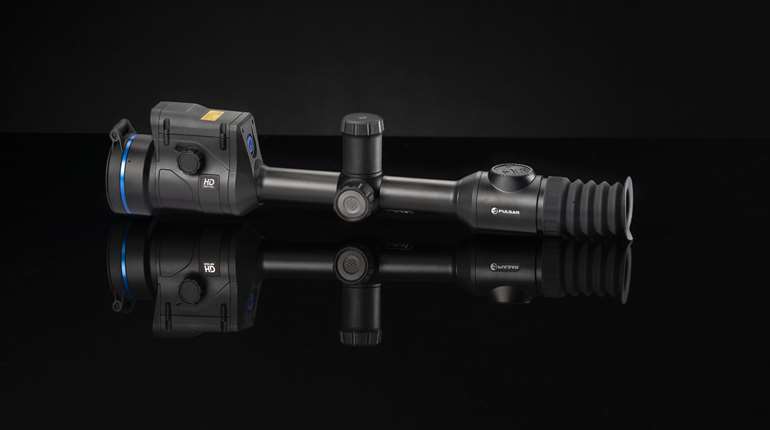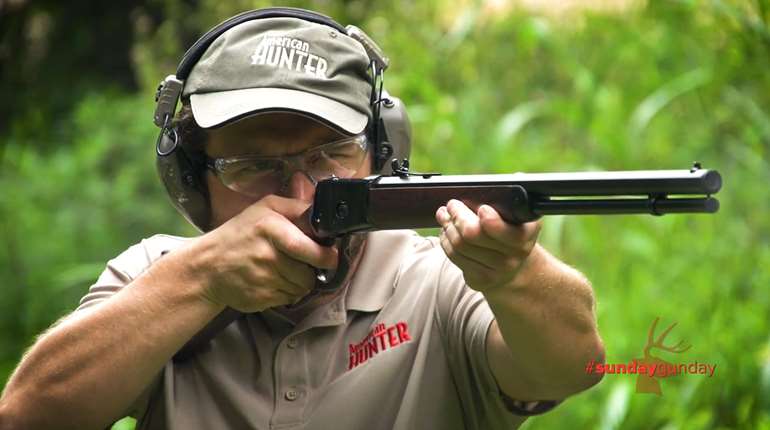Elk can bark. Wait, elk can bark? Why didn’t anyone tell me elk can bark? These are barking—at me. Is that good? That can’t be good. There’s no way that’s good.
Do I bark back?
And so went my thoughts as I sat crouched in the snow some 300 yards away from the herd we’d spent hours stalking. The herd that hid the one thing I’d traveled so many miles and scaled so many steep, snowy inclines to find: a bull.
Two short days prior, I couldn’t even have imagined such a scene playing out. I’d arrived in Utah on my second elk hunt in as many weeks—which also made it my second elk hunt ever, mind you. The first trip of my career had been something of a calamity.
Cervus canadensis may as well have been Latin for unicorn, because we’d seen just as many of the latter as the former.
Primed for round two, I readied myself for a hunt that promised to be as exhausting as it would be exciting. The terrain and elevation of Kamas, Utah, and the surrounding area were sure to prove quite the challenge to a lifelong resident of our nation’s Mid-Atlantic region, and I wasn’t in top form to begin with. Five days of battling rugged Colorado mountainside the week prior, coupled with an ornery flu-like bug that had been viciously running its course through the office, left me in a condition best described as walking wounded—not that I was going to let that deter me.
Our group’s outfitter, R&K Hunting Co., provided each of our camp’s four hunters with an individual guide. Mine was a friendly local by the name of Paul Reeb. As the first morning dawned, we loaded down Paul’s truck, climbed in and set off for a swath of property owned by his family, which would serve as our hunting grounds for the duration of the trip.
Twenty-five minutes later, we limped into Kamas to stop at the first auto-parts store we could find.
All told, I suppose it was better that the truck failed us before our hunt even began—it just as easily could have broken down in the middle of the day when we had eyes on elk. We were another 15 minutes or so from our destination and traversing roads that were already suffering the effects of the morning’s snowfall when we disconcertingly lost power steering. Rather than risk it, we changed course and headed for CarQuest.
After a bit of poking around, Paul determined one of the parts along the truck’s serpentine belt needed replacing. A quick purchase, a fair bit of “Does this look right?” and some off-the-cuff repair work put us back on the road. We lost an hour and a half, but hey, stuff happens.
“It’s okay, just put me on a bull within 45 minutes or so, and we’ll wrap this thing up early,” I joked to Paul.
Not even 35 minutes later, I was staring at a shooter bull.
When we first drove onto the property, Paul played a hunch. We parked, glassed for a bit and then took a short stroll uphill to get a better look at what was around us. The sky was dark gray, and the snowfall was picking up. Visibility was rapidly decreasing, but it didn’t matter. Paul knew the property, and his hunch was spot-on. Not quite 200 yards away, elk were bedded down, a bull among them. He asked if I wanted to try to set up a shot.
I had no idea. These were the first elk I’d seen in the wild.
“Should I?”
“We can do better,” Paul said.
We crept back to the truck, where we ran into Ryan Gilligan, a copywriter for ATK Sporting Group and one of my hosts for the week, along with his guide. And yes, before we go any further, a Skipper and a Gilligan spent the week hunting together.
Paul took the pair back up the hill for a look of their own, but Ryan, too, passed. We called it a morning and returned to the lodge. That evening’s hunt wasn’t quite as eventful, but we saw game. That’s all that mattered. Whereas Colorado had been quiet, one day in Utah had yielded dozens of elk—and, of course, an inside look at one auto-parts store.
Day two didn’t deliver the same thrills as our radiator-aisle diverted first trip afield, but it produced a few highlights. We followed a small herd of cows and spikers to the edge of the property line, and sat close as the wire fence rattled for the duration of their leaping departure. We played chicken with a particularly curious spiker after stumbling upon a fresh bedding area, and late in the day we nearly got a shot at a loner bull before he found cover behind a thick group of trees and never reappeared.
After two straight days of action like that, we were primed for Monday morning, day three. Paul and I, now permanently joined by Ryan and his guide, returned to our stamping grounds ready for someone to tag out. The truck stopped, the binos came out, and we saw …
Nothing. Zip. Nada. There wasn’t an elk to be found—not from our first vantage point, or our second, or our third. Overnight, it seemed they’d gone the way of the dinosaur. The only thing in Kamas looking sadder than us was a lonely bull moose we happened across that, somewhere along the line, had lost half his spread. Poor guy.
After hours of glassing empty draw after empty draw, it was time to mix things up. Paul asked if we wanted to try venturing down into “The Hole,” a densely wooded area on the lower half of the property. It had just recently received its rather foreboding name from another hunter earlier in the season.
As we stood looking down on The Hole, one thing became readily apparent: To the naked eye, there weren’t any elk here, either. We glassed for a little while, hoping for a sign of life. Things were beginning to look rather grim when Ryan claimed he heard a faint bugle. His guide, whose ears were far more attuned to such a call, listened closely and agreed.
We faced an impasse. We’d left our vehicles—and in turn, a fair bit of our gear—a little ways behind us. This was, on paper, only intended to be a scouting mission. The sun had gradually begun to melt the previous two days’ worth of snow, which only served to make the now muddy terrain all that much harder to climb. Our choices: Roll the dice, scuttle the vehicles and dive straight into The Hole, knowing full well we probably wouldn’t be coming back the way we went in, or pull out, regroup and start all over.
Suffice to say, we went for it. How could we not be intrigued by a location with a name like The Hole?
Upon nearing the bottom, we split up. Ryan and his guide went high, into the trees, while Paul and I stayed low and stalked along an old snow-covered horse trail. We had just stopped to examine a rather large, fresh mountain lion track when Paul’s cell phone buzzed. Ryan and his guide, a little ways above and ahead of us, had a line on elk. Better yet, they had their eyes on a bull. Paul and I each sank into a crouch.
Bang.
As the last echoes of Ryan’s shot faded, we remained crouched in the snow, awaiting orders. We didn’t have eyes on anything—Ryan or his guide, the elk they were shooting at, nothing. After a few moments, cows started calling somewhere ahead in the trees, around where we knew our partners were supposed to be. And then we heard the hurried whisper, “Get Shawn up here!”
A mad uphill scramble took us to their location, and we soon saw why we were beckoned. There was more than one bull in the herd, and Ryan’s guide had managed to stop it and some of the other elk from leaving after the shot. They were beginning to bed down a few hundred yards away. The bull Ryan shot at had bolted. Confident he had hit it, Ryan and his guide decided to wait a bit and let the elk wander off to expire. In the meantime, the four of us got eyes on the remaining shooter bull, which had settled in snug with a couple of cows and looked to be a 5x5.
Nearly two hours later, we were still waiting for a safe shot. Shaded by the forest and resting in snow that, guarded from the sun, had remained heavy, our bodies started to feel the cold. The bull, meanwhile, hadn’t so much as flinched. As the clock slipped from early to mid-afternoon, we decided to make a move. Besides, Ryan needed to get after his own elk. We quickly put together the plan: Ryan and his guide would head off after his elk, which had ventured into parts unknown on our right. Paul and I would drift to the left in an effort to get in front of the remaining herd before it was bumped from its bedding area by the search party.
We made our way down one hill and up another as the elk realized they weren’t alone. Paul set me up facing the ridge on which he was sure our prey would ultimately appear. Then he announced he was going ’round the bend to keep an eye on the herd and left me alone in the snow.
I burrowed into the white landscape, hurriedly trying to find a comfort zone in the few seconds I had to spare, and wished I had worn better pants. The melting snow began to soak through my leggings at a not-so-gradual rate. The elk would be converging on the opposing hill at any moment, and I was already at a disadvantage. There wasn’t a lick of potential concealment around me, and my wide-bodied, 6-foot-4-inch frame isn’t quite designed for covert operations.
Then, just like that, I wasn’t alone. One, two, three, four … . I stopped counting there, because four became dozens in a matter of seconds. Cows, calves and spikers were on parade, turning what had been an empty hillside into a veritable smorgasbord of elk. But where was the shooter bull? We’d all seen him. Heck, we’d stared at him for more than an hour. Now, of course, he seemed intent on showing up fashionably late to the party.
Resting squarely on an increasingly chilly rear-end, rifle at the ready, I remained as still as possible. Plan A: Think like scrub brush! Despite my mind’s best efforts, my body was quick to betray me. It gave in to the illness that had plagued me up and down the mountain for the entirety of my stay in the Beehive State.
And so I coughed. Twice.
Immediately, the three cows at the front of the herd snapped to attention, eyes easily finding what had to be the world’s least convincing stump on the opposing side of the draw. Uh-oh.
I sat glued to the spot, hoping against hope the cows leering at me wouldn’t decide to go scurrying off with the rest of the herd at their back. What are these elk going to do? I thought. Where’s my guide? The first question took care of itself rather quickly.
They barked.
Being wholly unprepared for that outcome, I maintained my somewhat silent vigil and kept an eye out for the bull, which still hadn’t entered the scene. Paul was still missing in action. I was trying to stifle another cough when the elk barked again.
We were caught in a perverse sort of loop: me coughing, the cows barking. I’m not sure how many barks into the process we got, but in short order my noisy neighbors decided the coughing lump a few hundred yards away wasn’t anything of note. They turned and went about their business, and more elk poured into sight. The sound of hurried footsteps crunching snow behind me signaled Paul’s return.
“The bull’s coming,” he said. “He’ll be coming in on the right.”
Though the previously steady flow had lessened, elk were still trickling into view. Cow, cow, spike, calf, cow … and then, finally, what I’d been keeping an eye out for: real antlers. I caught only a flash of the bull before losing him in the herd, but he was finally in play. Now it was just a matter of getting a clean look. Earlier, he’d vexed us by remaining embedded among cows, calves and thick scrub brush. Now, though, his herd was more spread out, and he was more likely to wind up exposed to the rifle-carrying, coughing lump some 300 yards away.
It was time to get serious. My rifle, an ever-reliable Kimber Model 8400, was shouldered and balanced on Paul’s binocular rest. Where were my shooting sticks? A couple hours hike back uphill, along with the rest of the gear we’d abandoned when we pursued what we then thought would be a fruitless lead. On my person, I had only my license and tag, bino, knife and the Kimber, loaded with Federal Premium .300 WSM Vital-Shok Trophy Copper. Not quite everything I would have liked, but sufficient.
Paul got on the bull first and whispered that it was by the “big aspen.” Granted, I’m no arborist—far from it—but I was sure nearly all of the trees in front of us at that moment were aspens. At least, I was pretty sure they were all aspens.
After a back-and-forth that probably took mere seconds—but felt like days—Paul got me on the bull. His rangefinder reported the gap between us to be 300 yards, well within the range we’d been anticipating when sighting-in the rifle days earlier. Now, though, it was real. Now my crosshairs were on the shaggy coat of a bull, with no cows or scrub brush to protect him.
“On him? Okay,” Paul said. “When you’re ready, go ahead and sh …”
Bang.
“I see blood, but I think you hit him low! Get him again.”
On it. Or so I thought. Between the rifle’s recoil and my precarious rest, I had to take a second to get back on my prey. The bull, somehow, hadn’t moved. The cows and spikers that had been nearby scurried away, but the herd as a whole showed no sign of departing. After another quick back-and-forth with Paul, I again had our target in my sights.
I hit him low? Let’s aim a little higher, then.
Bang.
Seconds later, only one member of the herd remained in sight, and he had just finished a limp tumble down the hill. The rest had decided it was finally time to make tracks. Elk down!
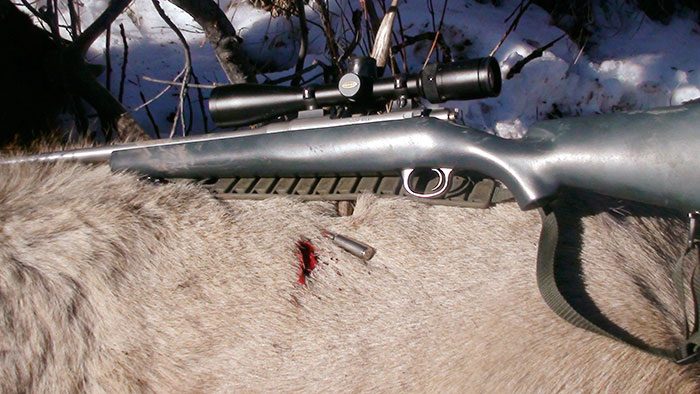
It took us just over an hour to travel those 300 yards to the bull. The soft and slick terrain forced us to get creative with our approach, and it grew increasingly apparent that the odds of us getting the animal out that night were slim. When I finally laid my hands on the bull, the clock read just a few minutes shy of 3 p.m. But we’d done it.
Upon closer inspection, we saw the bull was actually a 4x5 that was once a 5x5. Somewhere along the way, he’d lost one of the tines on his right side. My first shot—the one we thought hit low—had actually punched right through both of the big boy’s lungs, explaining why he hadn’t gone very far. At the time, we assumed I had sailed my second try—when I’d been aiming higher—but, upon quartering the elk the next day, we found it actually had caught him high in the neck.
With the sun gradually setting, we rallied with Ryan and his guide, and began our long trek out of The Hole. Unfortunately they hadn’t managed to turn up much sign of his elk and ultimately wouldn’t, even after a more exhaustive search. We left behind my bull, gutted and tagged, as the temperatures were plenty low enough to keep him from spoiling. Early the next morning, we’d return to collect him. Granted, he was no monster—but he was mine, and well earned. This one, at least, would bark no more.












